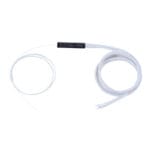Description
A 6U IT rack is a type of server rack designed to house and organize information technology (IT) equipment. The “U” stands for “rack units,” which is a standard measurement for the vertical space within a rack. One rack unit is equivalent to 1.75 inches (44.45 mm) in height.
Therefore, a 6U IT rack has a vertical space of 6 x 1.75 inches, which equals 10.5 inches (266.7 mm) in height. These racks are commonly used for smaller setups or when the amount of equipment is relatively limited.
Here are some key features and considerations for a 6U IT rack:
- Mounting Rails: 6U racks typically include adjustable mounting rails to secure and support IT equipment. These rails allow for flexibility in installing devices of different sizes.
- Ventilation: Adequate ventilation is important to dissipate heat generated by the enclosed equipment. Some racks may have built-in ventilation or fan options.
- Cable Management: Cable management features help organize and route cables neatly within the rack. This is important for ease of maintenance and troubleshooting.
- Security: Racks may include locking mechanisms to enhance security and prevent unauthorized access to the housed equipment.
- Materials: Racks are often constructed from materials like steel or aluminum to provide strength and durability. The choice of materials affects the overall weight and sturdiness of the rack.
- Accessibility: Consider the ease of access to both the front and rear of the rack for installation, maintenance, and cable management.
- Compatibility: Ensure that the rack is compatible with the specific IT equipment you plan to install, considering both size and weight requirements.



